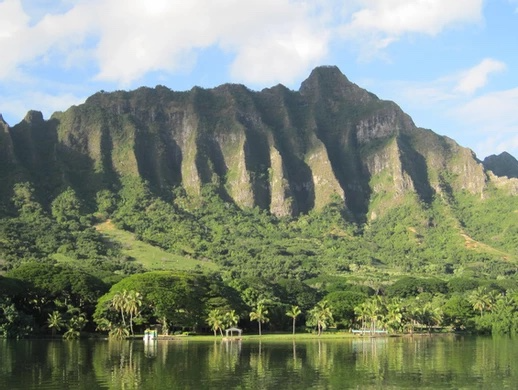Limit development of Windward Oahu
December 13, 2017
PrevNext
The Koolauloa Sustainable Communities Plan is a conceptual master design for Oahu’s rural stretch from Kaaawa to Kawela, slated for review and possible amendment every five years. The City Council Planning Committee recently put on hold action on an update so that nearby communities and the city can weigh a just-submitted proposal by Hawaii Reserves Inc. (HRI), the land management arm of the Church of Jesus Christ of Latter-day Saints.
HRI wants to build housing on land in the Laie area that’s now reserved for ranching and agricultural use — land that the proposed Sustainable Communities Plan (SCP) update specifies to be ill-suited for housing development. Koolauloa SCP supporters are right in their worry that a change in allowed land use could quickly overburden the region’s already fragile roads, sewer capacity and other infrastructure.
HRI, which manages or owns slightly more than 7,000 acres of land in the Laie area, has contended for decades that more housing, and affordable housing in particular, is sorely needed for the families who live, work and play there. Even so, it has yet to build such affordable units.
While the church has long had the ability to pursue home-building, it maintains that its sites in Laie are not suitable because they are either downwind of the sewer plant, on steep slopes or in low-lying flood-prone areas. For at least the past decade, it has been eyeing a switch in land use as the path to expanding its inventory of property that can be tagged for housing and other urban development.
Back in 2009, the church started pitching its 50-year plan, “Envision Laie,” initially conceived as a whole new town with 1,200 homes, a shopping center, churches, parks and a light industrial park in Malaekahana. In response to opposition from “keep the country country” groups and others, the vision has been tweaked several times.
The latest scaled-down version, unveiled before the Council’s Planning Committee in late November, proposes lifting the ranching-agriculture designation on a stretch of HRI land within the Laie ahupuaa to make room for new residential units — 250 in North Laie, and 50 on the existing Brigham Young University-Hawaii campus.
HRI calls this proposal a compromise. But while HRI stands to reap hefty real estate-related benefits, it appears the city would be making concessions that outweigh possible gains.
HRI has said it expects to abide by the city’s affordable housing rules, which currently require at least 30 percent of units be made available to those making up to 140 percent of median household income. Given Oahu’s daunting housing shortage, that’s a plus. However, expensive infrastructure upgrades could fall to city taxpayers.
Planning Committee Chairman Ikaika Anderson has said he opposed HRI’s bid to move the urban boundary to allow it to build in Malaekahana because such development flies in the face of the Oahu General Plan, which calls for preserving existing rural areas. The same sort of reasoning should apply to this scaled-down request.
The committee is expected to revisit the Koolauloa SCP update in February. At that time, it should approve the current draft, holding onto current ahupuaa uses, such as for ranching and agricultural purposes. And HRI should take another hard look at its land already zoned for urban uses to search for untapped affordable housing possibilities.
By the time the SCP comes up for a fresh review in the Windward communities, there could be encouraging housing growth in Honolulu’s urban corridor, spurred by transit-oriented development near rail stations. The idea is to diminish the need to build in some rural areas.
The General Plan directs development to Central and West Oahu, away from the Windward side of the island, which it has designated for rural, agricultural space. In an effort to fend off creeping urbanization, for now, let’s keep Laie Laie.
CLICK HERE for the original article

